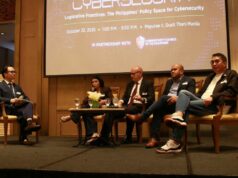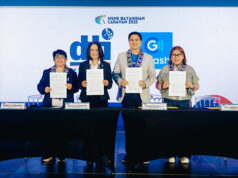Transforming lives through clean, efficient, and sustainable energy

The energy sector is inextricably tied to the growth of a country. The more a country develops — that is, build more buildings, create more jobs, and have more people move away from poverty — the more energy is needed.
Yet with the looming threat of climate change and increasing pressure to reduce greenhouse gas emissions, which the energy sector contributes the lion’s share of, the industry is in for a revolution. The Philippines’ energy sector must be prepared to adapt and overcome future challenges, or else be left behind as the rest of the world moves into a cleaner, more sustainable energy future.
This highlights the role that the Department of Energy (DoE) will play in the years to come. Now more than ever, as the department celebrates 29 years of service to the Filipino people, it faces the crucial task of fulfilling its vision of becoming “a globally-competitive agency that powers up Filipino communities through clean, efficient, robust and sustainable energy systems that will create wealth, propel industries and transform the lives of men and women and the generations to come.”
Last November, Energy Secretary Alfonso G. Cusi reaffirmed the country’s commitment to support the global effort to transition gradually from coal to clean power, one of the key issues tackled in the historic COP26 climate summit in Glasgow, UK.
“We cannot behave like developed economies since we are a developing country. Nonetheless, we remain committed to a gradual transition to renewable energy. Immediate transition will entail additional cost so we must strike a healthy balance in protecting our consumers and our economy and our quest for a cleaner environment,” Mr. Cusi said.
The Philippines joined more than 40 countries at COP26 that have committed to shift away from fossil fuels. Mr. Cusi further affirmed their support of intergovernmental and interagency collaboration to make clean power affordable and accessible globally as an effort to build back better from the COVID pandemic, and encourage others to make similar commitments.
Mr. Cusi also stated the agency’s continuing commitment to rapidly scale up deployment of clean power generation and energy efficiency measures in the economy, and to support other countries doing the same, recognizing the leadership shown by countries making ambitious commitments, including through the Energy Transition Council, as well as scale up technologies and policies aimed at supporting this development within the decade.
There are also plans to strengthen domestic and international efforts to provide a robust framework of financial, technical, and social support to workers affected by such changes.
“We recognize that while significant progress has been made to realize our shared vision, our task is not yet complete, and we call on others to join us as we redouble our effort to accelerate the global energy transition over the coming years,” Mr. Cusi said.
“We wish to emphasize that energy security is foremost because our energy transition comes as a means to improve the lives of our people and our country’s economic development,” he added.
Signatories of the COP26 agreement made a commitment to phase out coal-fueled power generation in the 2030s for richer countries, and the 2040s for poorer nations. Last year, the Philippines declared a moratorium on new coal-fired power plants. In its updated Energy Plan 2020-2040, the DoE seeks to make renewable energy account for 35% of the Philippine energy mix by 2030 and 50% by 2040.
 Powering through the challenges
Powering through the challenges
The journey towards the future of Philippine energy will not be easy. Even as the world slowly comes to grips with the climate problem and the health crisis brought about by the COVID-19 pandemic, there are still other significant issues that need to be addressed and other goals that the DoE is committed to pursue.
One such goal is achieving full electrification of unserved and underserved areas across the country by 2022. With the steady progress on expanding access to electricity, the country is on track to meet this target, as the household electrification level stood at 93.5% in June 2020, boosting an additional 292,491 energized households from only 23,229,866 in December 2019 up to 23,522,357 in June 2020. In particular, as of the publication of the 2019-2020 Energy Sector Accomplishment Report, the household electrification is already at almost 98% in Luzon, 94.6% in Visayas and 81.3% in Mindanao.
Meanwhile, pursuant to the goal of building a resilient energy infrastructure and securing such facilities in times of emergencies and disasters, the DoE institutionalized the Energy Resiliency Policy (ERP) which aims to strengthen existing infrastructure facilities, incorporate mitigation improvements into the reconstruction and rehabilitation, improve operational and maintenance standards and practices, and develop resiliency standards.
In 2019, the passage of Republic Act 11285 or the Energy Efficiency Act and its Implementing Rules and Regulations answered the sector’s call for a mandatory law that addressed issues on increasing energy demand and rising cost of imported fuels, allowing for creation of the Government Energy Management Program, and the Philippine Energy Labeling Program (PELP) and Minimum Energy Performance (MEP).
“The period 2019-2020 goes down in history as one of the most challenging periods of the 21st century. Our world is plagued with uncertainties and dangers brought about by climate change and the health pandemic. The challenge for the government is to do more and to do better,” Mr. Cusi said in the report.
“The DoE remains steadfast with its mission of improving the quality of life of the Filipinos by formulating and implementing policies and programs to ensure sustainable, stable, secure, sufficient, and accessible energy. In achieving such a mission, the DoE endeavors to balance between the provision of reliable and reasonably priced energy services to support the country’s inclusive growth, and the protection of the environment. Energy resiliency remains at the core of the DoE’s initiatives to mitigate the impact of any disaster with its adoption in the planning and programming of energy programs and projects,” he said. — Bjorn Biel M. Beltran



